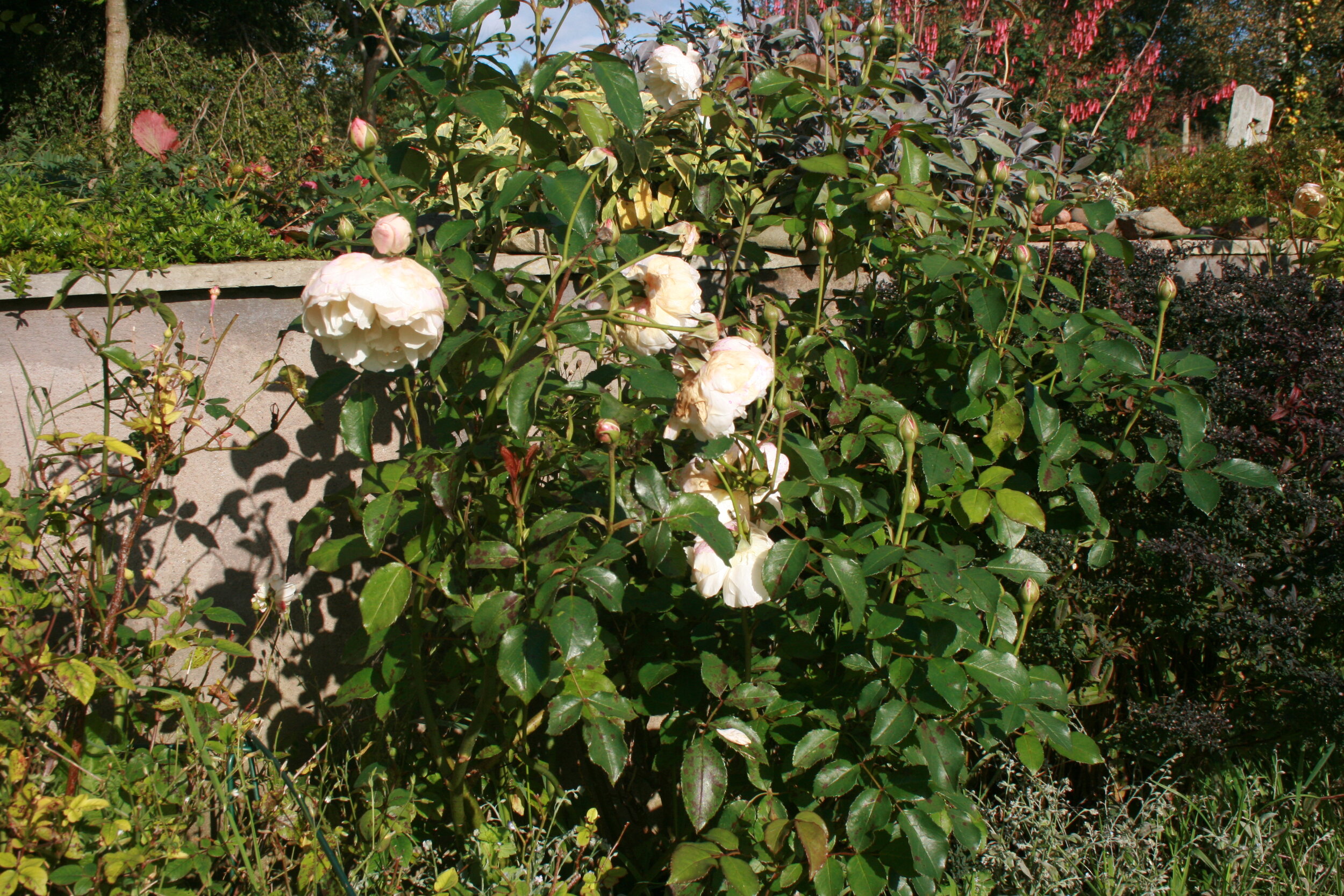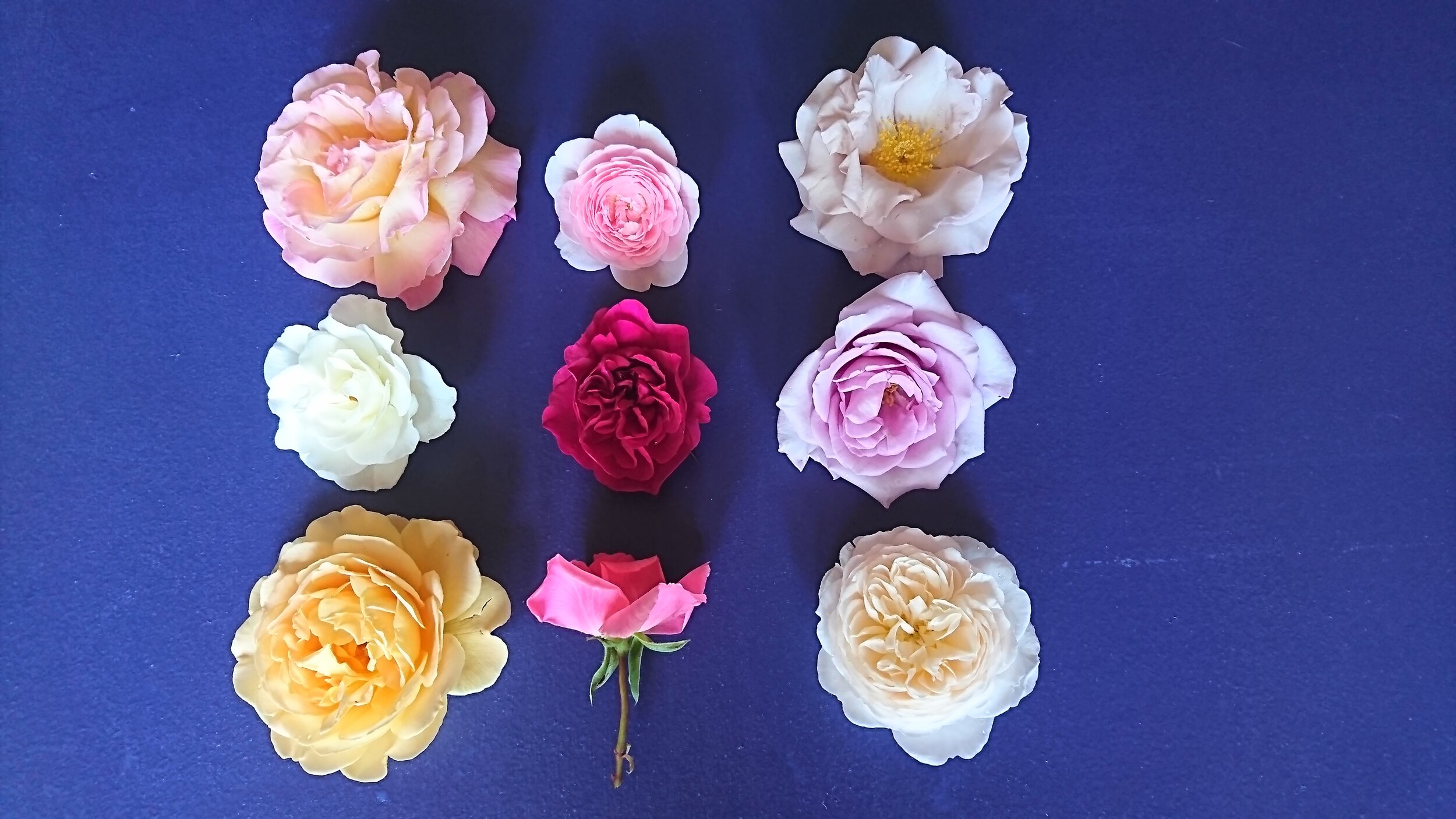There are a number of different forms and shapes of rose plant, all with differing uses for cut flowers:
Bush – large spreading plants with lots of clusters of blooms. They often have quite lax, arching stems and need support to enable easy access and care. They can take up a lot of space.
Hybrid Tea - generally a single large bloom on each stem. The flowers are often large and full but there are fewer chances to get a good cut stem. If the single flower blooms on a Monday when you need it on Thursday it’s not much good and will just have to be deadheaded.
Floribunda – smaller bushes with blooms in clusters. Hardy and robust varieties that are bred for a long season of flowers. They can be useful as they offer more than one chance to cut a stem. A flower can be snipped off to allow others in the cluster to bloom at the right time.
Climber – can be a climbing version of a hybrid tea, or specific varieties with long stems. Climbers can be very productive, make use of existing fences and walls and can be a good space saver.
Rambler – vigorous plants with blooms generally in clusters. The need a lot of space to spread, plus good support. Ramblers can give a totally different cut stem that is sought after for large scale installations.
Some roses flower all season in a series of ‘flushes’. Others have one burst of blooms and then that’s it until next year. If you’re growing for sale you should grow repeat flowering plants, you’ll get more blooms for your time, effort and space and they give a longer season for selling.
GARDEN PLANTS VS CUT FLOWERS
It’s important to recognise the differences between growing garden roses and growing roses for cut flowers. The approach to choosing, planting and pruning is very different and although it is possible to cut roses grown as garden plants, they will take more time, space and effort to achieve good cut stems. The following is an explanation of the differences in approach, it’s not intended to be critical of gardeners but this is what those I’ve asked have very honestly told me about their rose care.
Above are photos of roses planted outside for cut flowers (left) and in a garden setting (right)
Rose Varieties
I’ve tried a range of varieties, some have done well, some less so, some are lovely in the garden but don’t cut well. The roses on the list below have been tried and tested here over a number of seasons. We’re adding to the rose selection all the time, but it takes two full seasons or more to really be confident that they will perform well. There aren’t many that are bright, as unfortunately we find our orders are more usually for paler colours.
The roses in the attached list have been tried and tested as cut flowers on our clay soil in the Scottish Borders. There will be more varieties that make the grade but these are the ones I can personally recommend.
Note
Some David Austin varieties are no longer sold by the company following a rationalisation of their stock list in 2022.
Varieties left to right from top
Chicago Peace, Queen of Sweden, Stephen Rulo, Iceberg, Darcy Bussell, Blue Moon, Golden Celebration, Fragrant Delight, Crocus Rose
If you’re not from cold, damp Scotland, but have a sunnier, drier climate, you could try some of the roses grown by Californian rose farms. This is a plain list only and as we definitely don’t have Californian growing conditions, we can’t recommend these unless they’re also on the Recommended Roses sheet.




